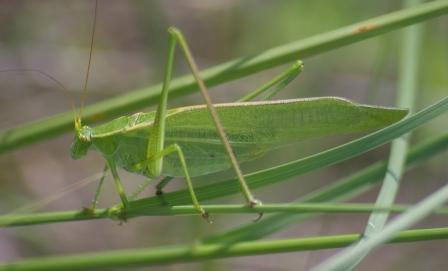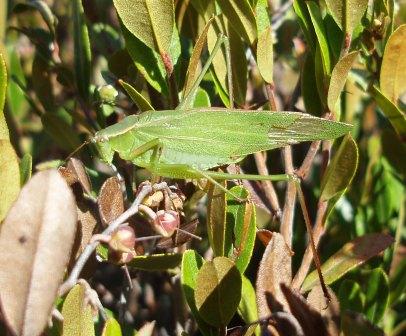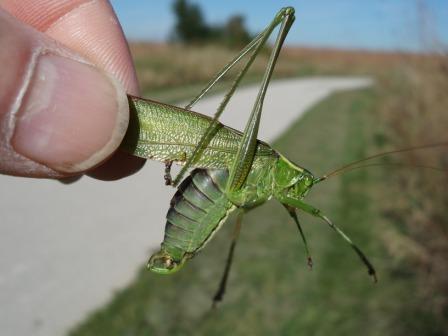by Carl Strang
My recent blog posts have shared highlights of this year’s field season, as I searched for singing insects in the 22-county area I define as the Chicago region. Those accounts haven’t told the whole story, though, and I have a few last photos to shake out of the bag. These fill out some of the experience of doing this kind of regional study.
For instance, other animals have enhanced the delight.

The chalk-fronted corporal is a dragonfly I have encountered only in the northern portion of the region, in this case at the Lulu Lake Nature Preserve in northern Walworth County, Wisconsin.

Walsh’s grasshopper was a new one for me. Not a singing species, but an interesting find at the Poverty Prairie in DuPage County’s Waterfall Glen Forest Preserve.

Turkey vultures assemble at dusk on the Culver, Indiana, water tower. My travels take me back to my home town a few times each season.
Interesting and beautiful scenes are to be found in the relatively undisturbed wild areas which are my main destinations.

An early evening rainbow at Conrad Station in the Indiana Kankakee Sands presaged a thunderstorm-dodging drive home on July 2.

Pinholes between tree leaves cast solar eclipse shadows at Blackwell Forest Preserve. Though the moon covered around 90% of the sun at peak, I detected no change in singing insect activity.

I had hoped to find delicate meadow katydids in the pannes. Dusky-faced meadow katydids were a good find there, but that species has a solid hold in other dunes wetlands.

I believe these white pines at Warren Dunes State Park in Berrien County, Michigan, are the same ones where Richard Alexander found treetop bush katydids in 1971. He described the trees as small, but all are tall now. They still foster pine tree crickets, but I did not find any bush katydids.
I ended up with 115 county records for the season, totaling all newly found singing insect species over all the counties.

This curve-tailed bush katydid at the Jasper-Pulaski Fish and Wildlife Area in Indiana provided a Jasper County record for my study.

I found a healthy population of long-tailed meadow katydids, including this brown-legged male, at Ferson Creek Fen in Kane County.

Lisa Rainsong, Wendy Partridge and I drove south to Loda Prairie to check out the bush cicadas there. I concluded this year that the species does not occur in the Chicago region.

This Texas bush katydid was singing in early October at Springbrook Prairie Forest Preserve, DuPage County. I had an observation of this species on October 17, my latest ever in the region.
Most of the long winter remains, and as I compile data, write reports, and visit museums, I will be looking forward to another collection of rich experiences as I resume my field study in 2018.
























